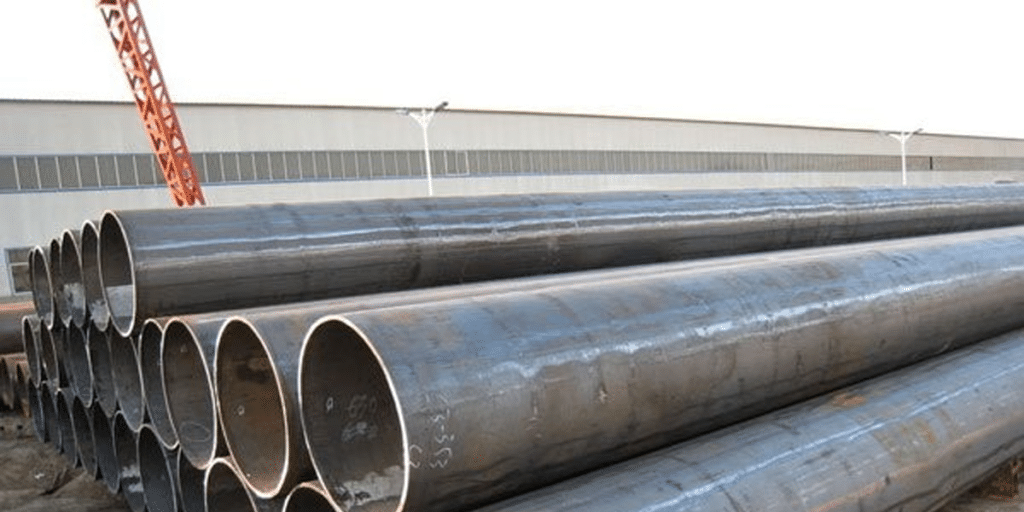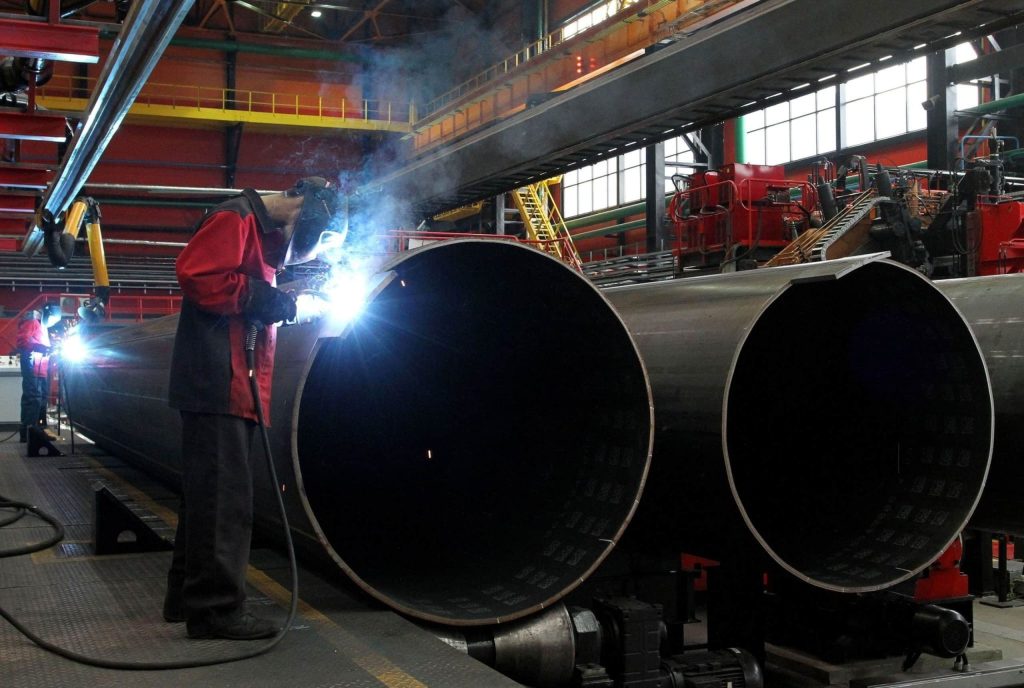- 1. Definition of ASTM A53 Grade B Galvanized Pipe
- 2. Corrosion Protection Mechanism of ASTM A53 Grade B Galvanized Pipe
- 3. Coating Standards and Testing Requirements
- 4. Mechanical Properties of ASTM A53 Grade B
- 5. Galvanizing Methods: Hot-Dip vs. Electro-Galvanizing
- 6. Key Considerations for Procurement and Usage
- 7. Why Choose LONGMA?
- 8. Conclusion
Among various carbon steel pipe products, ASTM A53 Grade B Galvanized Pipe stands out for its excellent corrosion resistance, stable mechanical properties, and wide application range. It is extensively used in water supply systems, natural gas pipelines, fire protection networks, construction projects, and industrial transportation systems.
This article provides a comprehensive overview of the corrosion protection mechanism, galvanizing process, coating standards, and testing requirements of ASTM A53 Grade B galvanized pipes — helping buyers better understand its technical characteristics and minimize procurement risks.
Definition of ASTM A53 Grade B Galvanized Pipe
According to the ASTM A53/A53M specification, Grade B is a medium-carbon steel pipe that can be manufactured either by Electric Resistance Welding (ERW) or as a Seamless pipe.When the pipe undergoes hot-dip galvanizing, it becomes the commonly known ASTM A53 Grade B galvanized pipe, featuring a protective coating composed of a zinc–iron alloy layer and an outer pure zinc layer.
Section 15 of the ASTM A53 standard (“Zinc Coating – Galvanized Pipe”) clearly specifies:
- The zinc coating must conform to ASTM A123or ASTM A153
- The minimum coating weightshall not be less than 8 oz/ft² (approximately 550 g/m²).
- The coating must be continuous and free of peeling, blisters, or cracks.
This ensures that ASTM A53 Grade B galvanized pipe not only meets mechanical strength requirements but also delivers long-term oxidation and corrosion resistance.
Corrosion Protection Mechanism of ASTM A53 Grade B Galvanized Pipe
The zinc coating provides protection through two primary mechanisms — barrier protection and cathodic protection.
(1) Barrier Protection
The zinc layer acts as a physical shield that isolates moisture and oxygen from the steel substrate, effectively delaying oxidation and corrosion.
(2) Cathodic Protection
When minor coating damage occurs, zinc — being more active than iron — reacts first with oxygen to form zinc oxide, thereby sacrificing itself to protect the steel.
This mechanism gives ASTM A53 Grade B galvanized pipe superior performance in humid, saline, or industrial gas environments.
(3) Passivation and Coating Stabilization
Some manufacturers add a chromate passivation layer after galvanizing to further enhance resistance to white rust and maintain coating appearance during storage or shipping.
Coating Standards and Testing Requirements
In compliance with ASTM A53/A53M, ASTM A123, and ISO 1461, galvanized pipe coatings must undergo the following key inspections:
| Test Item | Test Method | Standard Requirement |
| Coating Thickness | Magnetic Thickness Method (ASTM E376) | ≥ 85 μm |
| Adhesion | Hammer Test or Cross-Hatch Test | No peeling or delamination |
| Surface Appearance | Visual Inspection | Uniform surface, free of rust stains |
| Coating Weight | Weighing Method | ≥ 550 g/m² |
| Salt Spray Test | ASTM B117 | ≥ 240 hours with no corrosion |
LONGMA’s in-house laboratory is equipped with complete coating inspection facilities, performing full testing before shipment to ensure every ASTM A53 Grade B galvanized pipe meets international standards.
Mechanical Properties of ASTM A53 Grade B
In addition to corrosion resistance, mechanical strength remains a key factor for material selection.According to ASTM A53/A53M Table X2.2, the typical mechanical properties of Grade B are as follows:
| Property | Requirement | Description |
| Yield Strength | ≥ 240 MPa | Stress at which permanent deformation begins |
| Tensile Strength | ≥ 415 MPa | Maximum stress before rupture |
| Elongation | ≥ 20% | Ductility of the steel pipe |
Even after galvanizing, ASTM A53 Grade B pipes retain their excellent structural integrity, making them ideal for medium-pressure fluid transmission, construction supports, and mechanical structures.
Galvanizing Methods: Hot-Dip vs. Electro-Galvanizing
(1) Hot-Dip Galvanizing (HDG)
Pipes are immersed in molten zinc at temperatures above 450°C, forming a metallurgically bonded zinc–iron alloy layer.This method provides superior corrosion resistance and long-term durability.
Recommended for: outdoor piping, fire protection systems, and petrochemical projects.
(2) Electro-Galvanizing
Zinc is electrochemically deposited onto the steel surface, resulting in a smooth and bright finish but with a thinner coating (typically 10–30 μm).
Recommended for: indoor installations and low-corrosion environments.
LONGMA operates a fully automated continuous hot-dip galvanizing line, ensuring uniform coating thickness and strong adhesion, combined with UT/MT weld inspection for consistent internal and external protection.
Key Considerations for Procurement and Usage
When purchasing ASTM A53 Grade B galvanized pipes, buyers should pay close attention to the following:
- Request the Mill Test Certificate (MTC):
Verify chemical composition, yield strength, and coating thickness comply with ASTM standards. - Identify the Pipe Type:
- Type E (ERW)– cost-effective for general conveyance.
- Type S (Seamless)– suitable for high-demand and pressure-sensitive projects.
- Check Coating Compliance:
Ensure coatings meet ASTM A123/A153to prevent premature corrosion. - Packaging and Transport Protection:
Use moisture-proof wrappingfor long-distance shipment to prevent white rust formation.
Why Choose LONGMA?
With over 20 years of steel pipe manufacturing experience, LONGMA has earned a strong reputation for quality-driven production and international standard compliance.
Our Advantages:
- Complete in-house testing system, adhering to ASTM A53, ASTM A123, and ISO 9001.
- Fully automated ERW and hot-dip galvanizing linesensure consistent weld and coating quality.
- Customizable lengths, wall thicknesses, and coating specificationsfor different project needs.
- Extensive export experiencein the Middle East, Africa, and Southeast Asia infrastructure sectors.
Choosing LONGMA means choosing standardized production, traceable quality, and reliable global supply.
Conclusion
In summary, ASTM A53 Grade B galvanized pipes combine exceptional corrosion resistance, mechanical strength, and strict compliance with coating standards, making them one of the most cost-effective and durable pipeline solutions for industrial and construction applications.
Whether you require ASTM A53 Grade B ERW galvanized pipes or seamless hot-dip galvanized pipes, LONGMA provides rigorously tested, high-quality products to ensure your project’s safety, durability, and efficiency.



